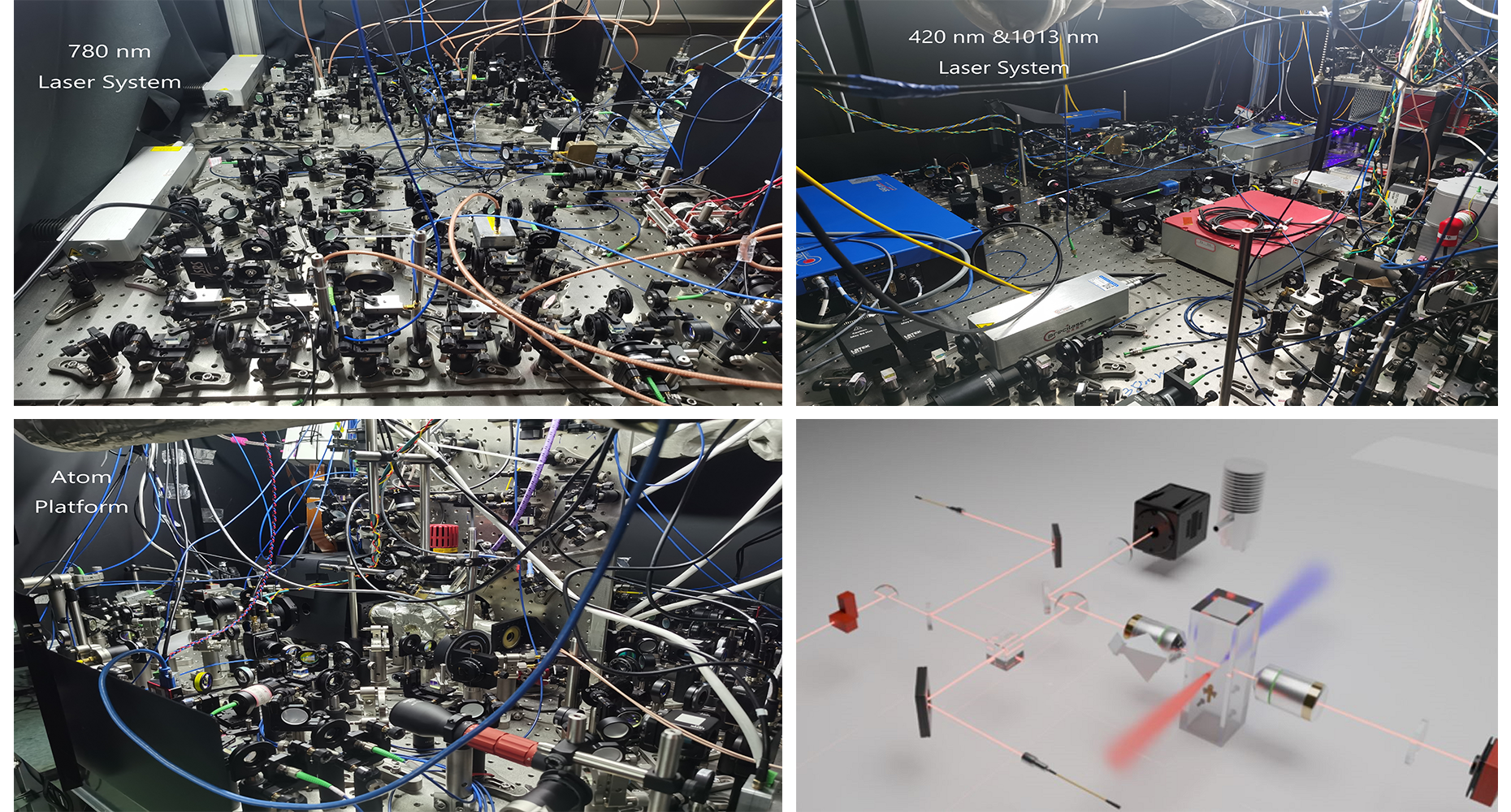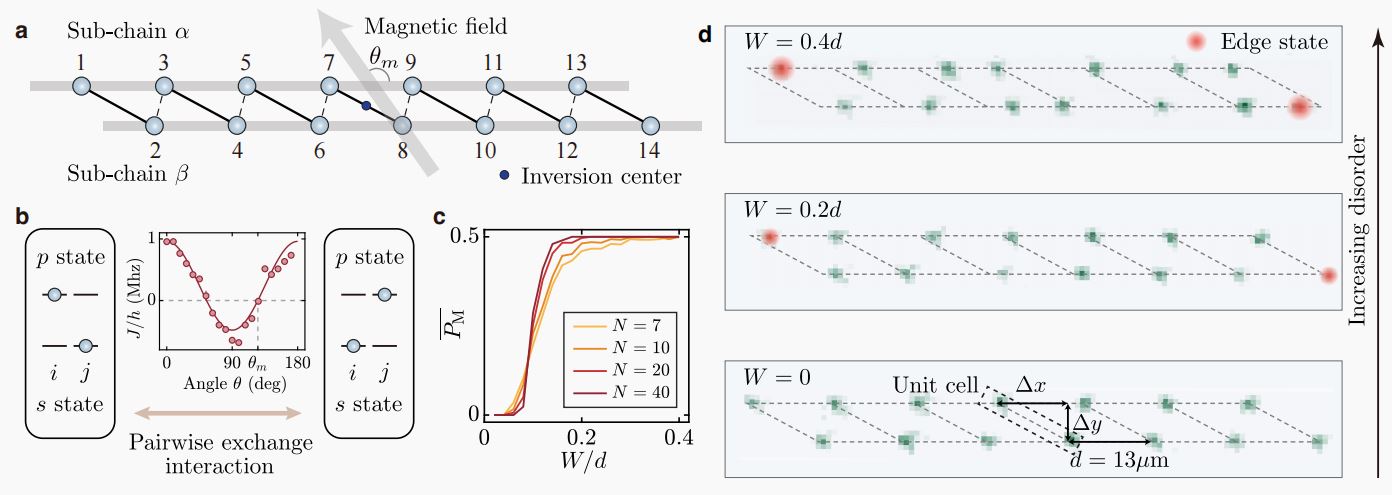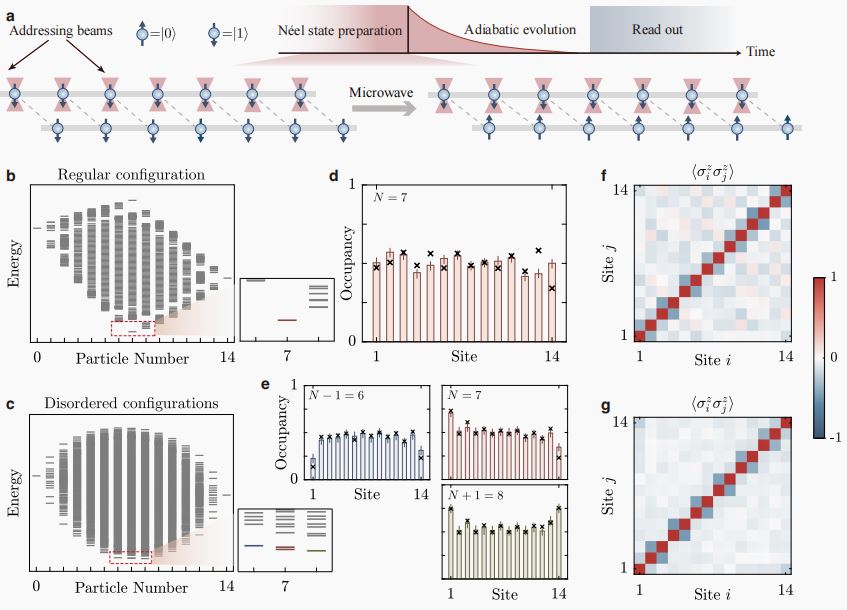



|
Rydberg Atom Array: Programmable Quantum Processor(Collaborating with Prof. Meng Khoon Tey) Rydberg atom array is a very versatile tool used to investigate quatum many-body physics in strong correlated systems. Exploiting light assisted collision effect, we can catch single atom with one focused laser tweezer with 1 um width. Using Spatial Light Modulator(SLM), we can generate arbitrary tweezer array. After atom sorting, this target array is prepared deterministically. If excited to Rydberg state which has large principle number, interaction between atoms can be very large and depends on distance between them. Exploying these technologies together, we can desgin the Hamiltonian governing the evolution of the system and explore a large range of exotic many-body physics problems, such as quantum Ising model and SSH model. |
 |
|
Recent results | ||
|
Observation of Anomalous Information Scrambling in a Rydberg Atom Array [1] Quantum information scrambling, which describes the propagation and effective loss of local information, is crucial for understanding the dynamics of quantum many-body systems. We report the observation of anomalous information scrambling in an atomic tweezer array with dominant van der Waals interaction. We characterize information spreading by an out-of-time-order correlator and observe persistent oscillations inside a suppressed linear light cone for the initial N´eel state. Such an anomalous dynamic, which differs from both generic thermal and many-body localized scenarios, originates from weak ergodicity breaking in quantum many-body scarred systems. 
[1]. Liang, X., Yue, Z., Chao, Y.-X., Hua, Z.-X., Lin, Y., Tey, M. K., & You, L. (2025). Observation of Anomalous Information Scrambling in a Rydberg Atom Array, Physical Review Letters, 135(5). | ||
|
Observing structural disorder induced interacting topological phase in an atom array [2] Topological phases of matter can appear in noninteracting systems, as in band topology, or in teracting systems, such as in spin models, with their defining features typically robust against weak disorder. Intriguingly, disorder itself can also induce topological phases–exemplified by the An derson topological insulator in noninteracting systems. Experimental studies on disorder induced topology have so far been limited to band topology. Here we report direct observations of structural disorder induced many-body interacting topological phase in an atom array at half-filling, whereby random offsets to tweezer locations forming a lattice implement structural disorder, causing fluc tuating long-range dipolar interactions between tweezer confined single atoms. The ground state degeneracy in disordered configurations is detected and compared to a regular lattice. The induced topological phase is also vindicated by the spatially resolved atom-atom correlation functions for different forms of dimer compositions. By probing the quench dynamics of a highly excited state, we observe markedly slower decay of edge spin magnetization in comparison to the bulk spin one, consistent with the presence of topologically protected edge modes in disordered lattices. Our ex periments open a new direction for studying the interplay between structural disorder and strongly interacting topological matter in Rydberg atom arrays. 

[2]. Yue, Z., Mao, Y.-F., Liang, X., Hua, Z.-X., Ge, P., Chao, Y.-X., Li, K., Jia, C., Tey, M. K., Xu, Y., & You, L. (2025). Observing structural disorder induced interacting topological phase in an atom array (Version 2), arXiv. https://doi.org/10.48550/ARXIV.2505.06286 |